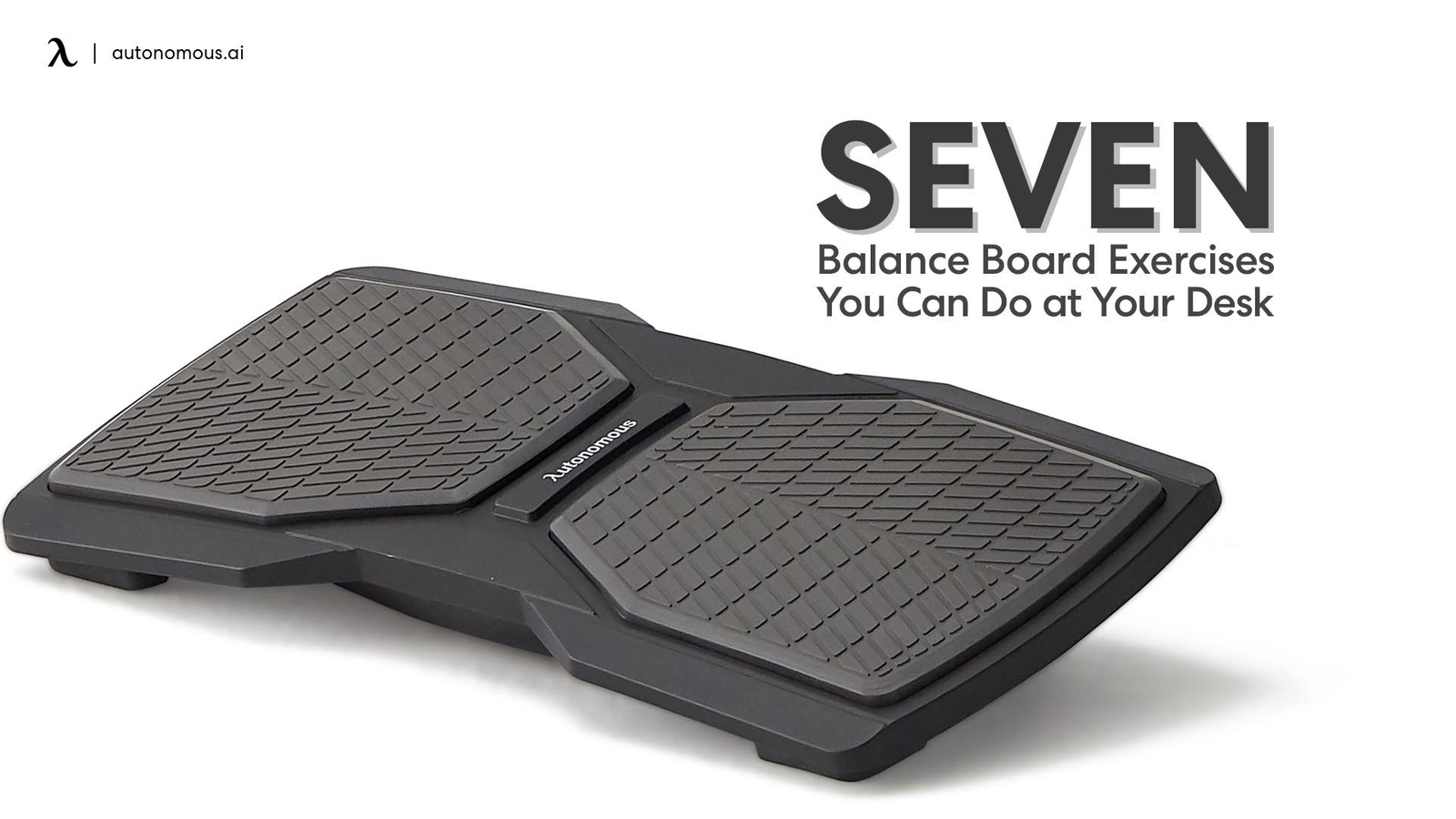
7 Balance Board Exercises You Can Do at Your Desk
Looking to move more while standing at your standing desk? One of the best ways to bring movement to your body at work is by using a balance board.
With more office workers opting for standing desks these days, comes research that shows that standing for extended periods is just as bad as sitting, as it leads to lower limb fatigue, muscle fatigue, and a reduced mental state. However, investing in a balance board can help you counter these negative effects, by bringing more movements to your legs and improving blood circulation.
Other benefits of a balance board include improving posture, coordination, and balance, while successfully activating your core muscles. With all these, you’d think everyone would be using a balance board. Yet, many people feel balance training isn’t ideal for them. Because they’ve two left feet and lack coordination.
You need not worry.
In this article, I’ll go through 7 great balance board exercises that even the most uncoordinated person can do comfortably to improve their coordination. All these exercises require a balance flow board.
How to use a balance board with your standing desk
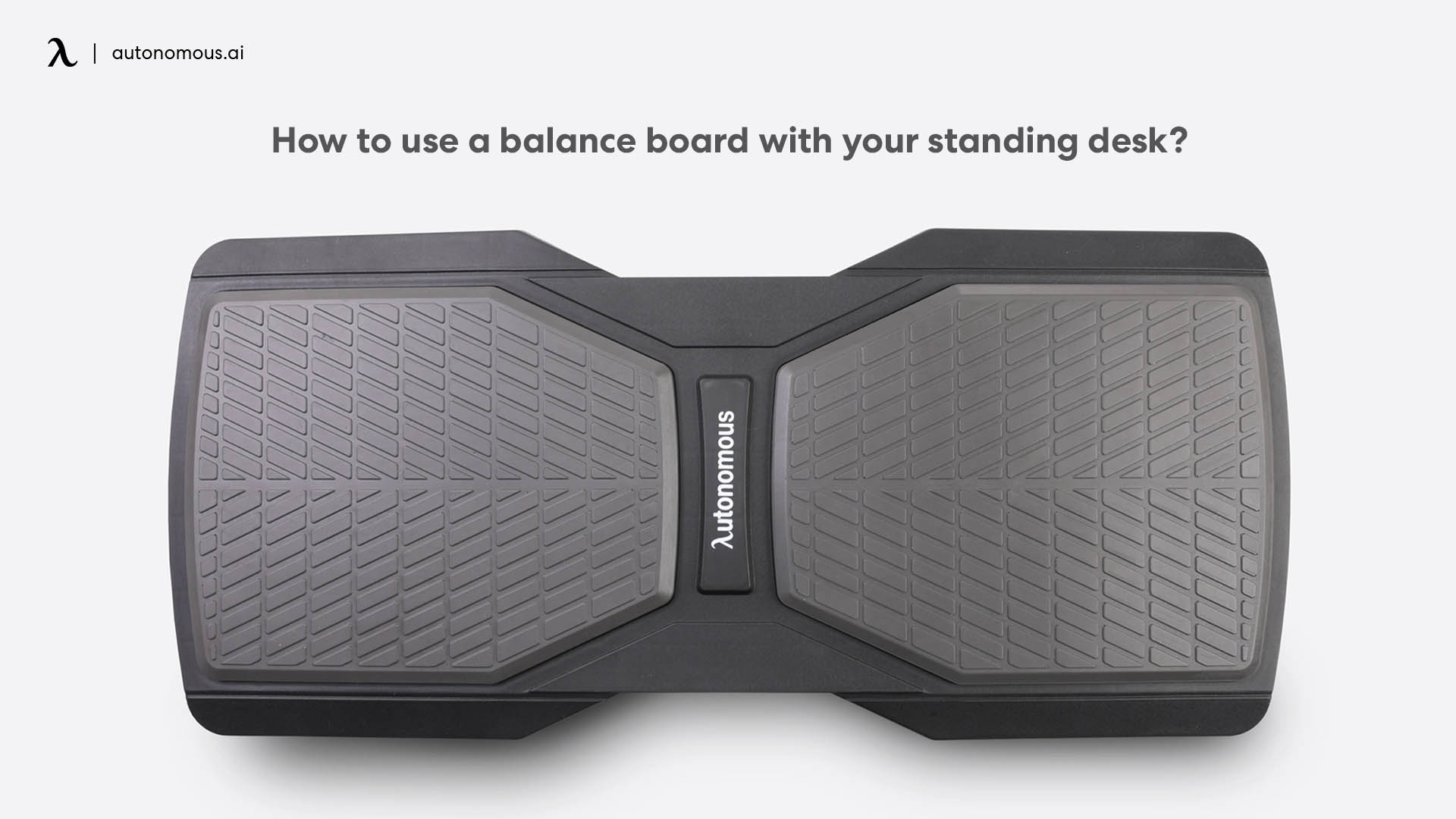
A balance board can help take the benefits of a standing desk to a whole new level, by engaging your lower limbs and core as you stand. However, for beginners, there’s so much you need to know when using a balance board at the office:
- Choose the right type of balance board based on your skill level. If you’re a beginner, a rocker or wobble board is a perfect choice. As you build confidence and strength, you can progress to more challenging boards for better muscle engagement. To find the ideal option for your needs, explore the best balance boards for standing desks.
- Wear flat shoes to keep your toes and heels at the same level as your balance board.
- To keep your board stable, distribute your weight evenly. You can lean slightly on your heels and toes as needed.
- Make sure you align your neck, torso, and hips vertically and you can use this as your center of mass.
- Don’t use your balance board for more than 20 minutes at a time. If, for instance, you have a height-adjustable standing desk, adjust its height and use your balance board as a footrest while sitting down.
- Make sure your office has ample space and is well lit as you work with your balance board. Change your office layout so you won’t hurt yourself if you stumble and fall.
- Avoid looking at your feet because this’ll cause you to wobble more. Instead, concentrate on a point far away from you.
- Avoid using your balance board on a slippery floor. Carpeted floors are the best option.
7 balance board exercises
With a balance board, you can do a variety of exercises on it while remaining relatively stationary. That’s fantastic because you can work and exercise at the same time.
1. Board tilt
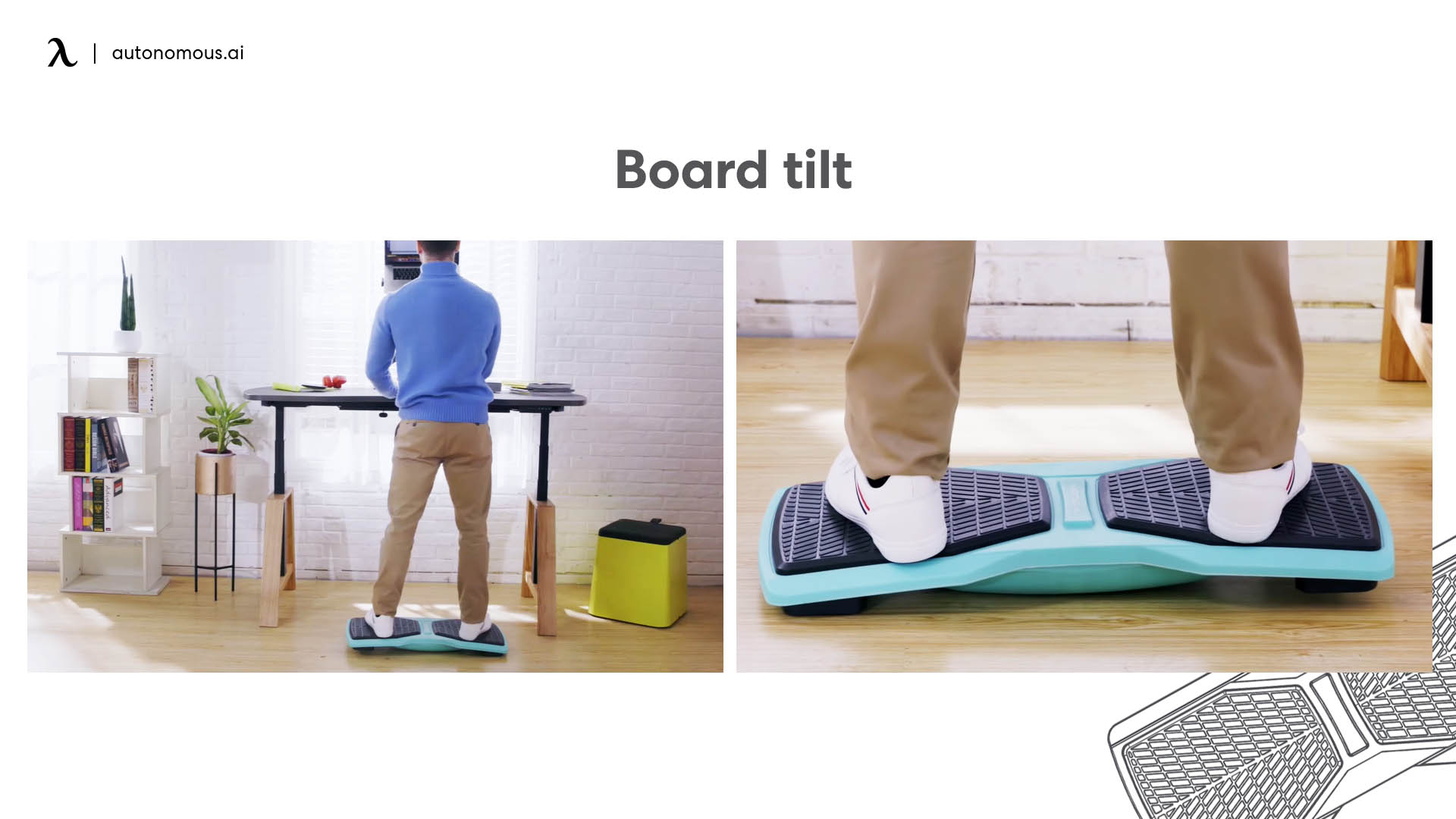 This is a simple but challenging exercise, especially for beginners who are looking to strengthen and stabilize their ankles. Board tilt works best with a wobble board or half balance ball.
This is a simple but challenging exercise, especially for beginners who are looking to strengthen and stabilize their ankles. Board tilt works best with a wobble board or half balance ball.
Starting from a neutral position, steadily tilt your balance board forward until the edge touches the floor. Then, steadily tilt it backward until the edge touches the floor. Do this slowly for 30 seconds. Also, you can tilt your board side to side, depending on the type of balance board you have.
If you’re not confident enough that you can do this exercise without losing balance, use your secure standing desk for support.
2. Round the clock
This exercise aims to keep your balance board steady as you make a full rotation. This exercise challenges your balance, strengthening your core and lower leg muscles as you try to control the movement. The round-the-clock exercises work perfectly with a wobble board or half balance ball.
From a neutral position, steadily tilt your board forward until the edges touch the floor. Then, with the edge still touching the floor, rotate your balance board clockwise. Keep shifting your weight as you go until you complete the rotation. Next, do a counterclockwise rotation.
You can take this exercise to the next level by doing it one leg at a time.
3. Balance board push-ups
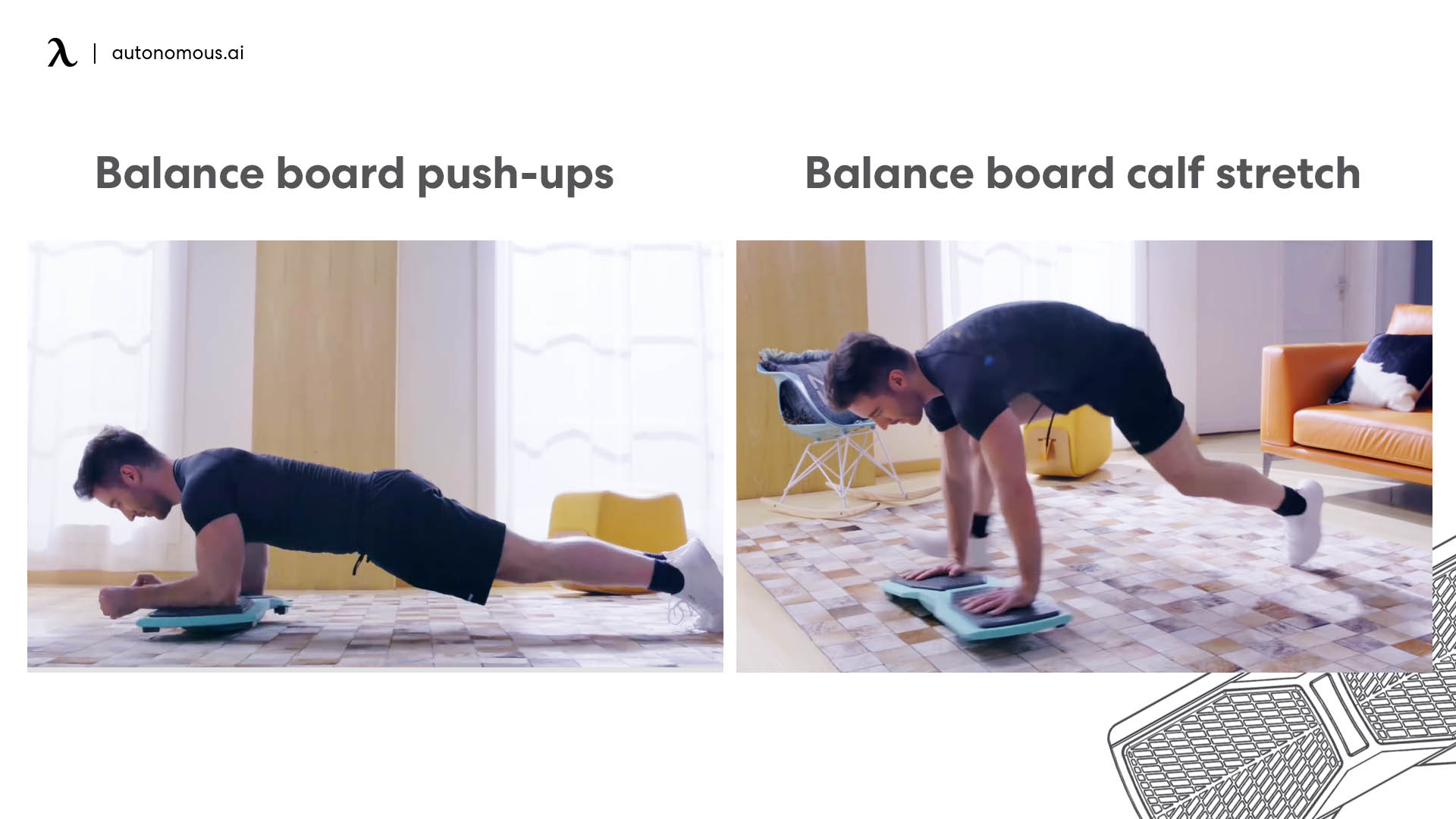
Get into a standard push-up position and place your hands on the balance board. To avoid getting pinched fingers while doing balance board push-ups, keep your wrists in a fully extended position and make sure your hands are on top of the board. Also, if you’re new to exercising with a board, perform your push-ups while on your knees and then you can advance to full push-ups for a greater challenge.
4. Balance board calf stretch
Calf stretches are beneficial for stretching out the calf muscles, improving your stability. When performing this exercise, start by placing one foot on the balance board. Keep the heel of that foot flat on your balance board and your other foot flat on the floor. Then lean forward until you feel your calf muscle stretching.
5. Balance board dumbbells
You can do simple dumbbell arm exercises while balancing on your board. With your feet shoulder-width apart on the balance board, place the arch of your foot in the center of the board for balance before you start. Alternate between your legs to develop strength. Challenge yourself even more by doing dumbbells while balancing on one leg.
6. Balance board squat
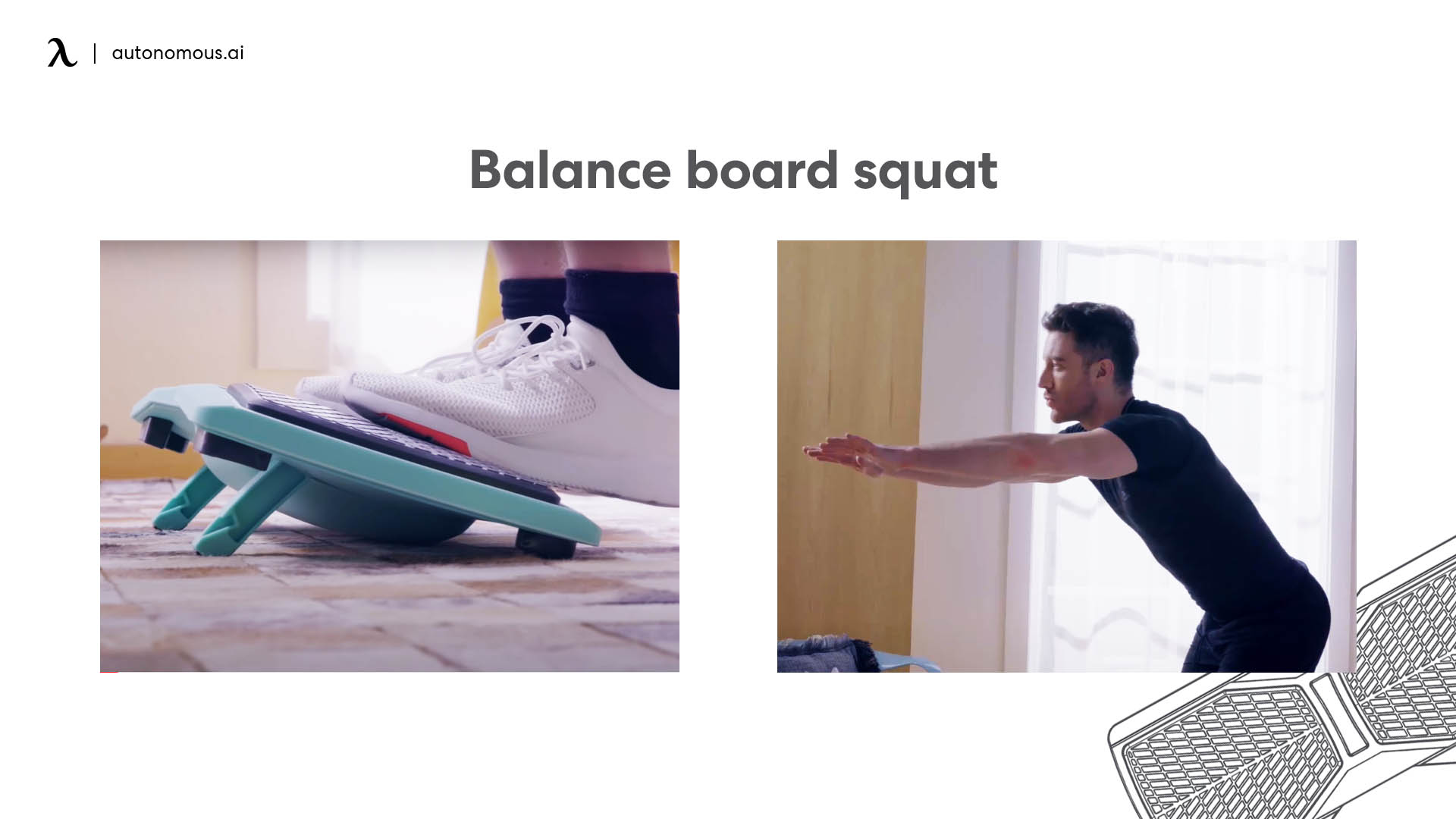
This is one of the best exercises you can do at your standing desk. Balance board squat helps you burn fat, tone, and strengthen your calves, hamstrings, and quadriceps.
Bending your knee slightly, position your feet a little wider than your hip-width on your board. Squat slowly, such that your thighs are parallel to the floor. Maintain this position for as long as you can before rising slowly. The next day, do the squats for a longer period.
7. Balance board abdominal exercises
You can perform abdominal exercises while sitting on your balance board. Abdominal exercises are simple exercises that strengthen the core muscles in your trunk.
Sit on your balance board with your legs crossed, your back straight and head up, steadily make a rotational movement with just your abdominal muscles. Repeat this step rotating in the opposite direction. This exercise improves movement and lower-back mobility. Continue this exercise by changing directions for 3 minutes.
Also, you do abdominal exercises while kneeling on your balance board with your hands at your hips or by your side. Just like the sitting exercises, move your trunk muscles in a rotational motion. Make a few rotations in one direction, then stop and repeat this step, rotating in the opposite direction. Continue this exercise by switching directions for 5 minutes.
Conclusion
The 7 balance board exercises listed above will help you progress from a beginner to a seasoned balance boarder. However, they’re just the tip of the iceberg when it comes to what you can do on your standing desk balance board. Once you have gained confidence on your balance board, it’s time to find new and challenging ways to move on it!
Spread the word
.svg)







